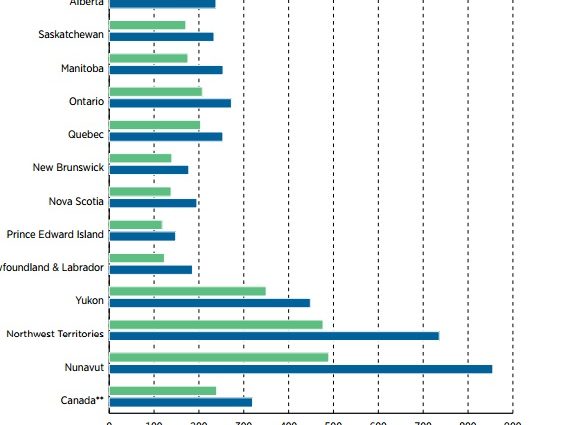 CFN – Canadian cities such as Winnipeg and Windsor, Ont., burden taxpayers with overstaffed police departments, finds a new study published today by the Fraser Institute, an independent, non-partisan Canadian public policy think-tank.
CFN – Canadian cities such as Winnipeg and Windsor, Ont., burden taxpayers with overstaffed police departments, finds a new study published today by the Fraser Institute, an independent, non-partisan Canadian public policy think-tank.
“Police fulfill a fundamental role in society and protect law-abiding citizens from criminals. But taxpayers can face higher costs for police than the crime rate or other socio-economic factors warrant,”
said Livio Di Matteo, study author, Fraser Institute senior fellow and economics professor at Lakehead University.
The study, Police and Crime Rates in Canada, analyzes policing levels, local crime rates and other socio-economic factors (i.e. median family income, unemployment rates, youth populations) using StatsCan data over a 10-year period to calculate the optimal number of police officers in Canada’s metropolitan areas. The actual number of police officers is compared to the optimal number in each metropolitan area.
The most overstaffed police forces—controlling for local crime rates and other socio-economic factors—are found in Saint John, N.B., Winnipeg, Man., Windsor, Ont., St. Catherines-Niagara, Ont., and Abbotsford-Mission, B.C.
Conversely, Moncton, N.B., and Kelowna, B.C. have the most understaffed police forces. (For the complete list of the top 10 most overstaffed and understaffed metropolitan areas, see bottom of news release.)
“While more police can lead to lower crime rates, at some point, increased spending on additional police officers has little impact on crime reduction. Today, in many cities across Canada, an excess of police officers are dealing with less and less crime,” Di Matteo said.
The study finds that government spending on policing grew substantially over the past decade even as crime rates dramatically fell. For example, between 1986 and 2012, policing costs (per person in Canada) rose by 45.5 per cent while criminal code incidents per officer (a unit to measure police workload) dropped by 36.8 per cent.
“Of course, declining crime rates are a good thing, and some may attribute those declining rates to an increase in police spending. But in reality, some Canadian districts maintain substantially larger police forces than their crime rates warrant while other districts maintain smaller forces despite relatively high rates of crime,” Di Matteo said.
“As municipalities across the country struggle with limited resources, more analysis should focus on the nature and volume of police calls, the arbitration process involving police unions, policing technology and styles, and other factors that determine police staffing levels.”
|
Police staffing levels among metropolitan areas in Canada |
|
|
MOST UNDERSTAFFED |
MOST OVERSTAFFED |
|
Kelowna, B.C. |
Saint John, N.B. |
|
Moncton, N.B. |
Winnipeg, Man. |
|
Ottawa-Gatineau, Ont.-Que. |
Windsor, Ont. |
|
Saguenay, Que. |
St. Catharines–Niagara, Ont. |
|
Quebec City, Que. |
Abbotsford-Mission, B.C. |
|
Kitchener-Waterloo-Cambridge, Ont. |
Thunder Bay, Ont. |
|
Trois-Rivières, Que. |
St. John’s, N.L. |
|
Kingston, Ont. |
Peterborough, Ont. |
|
Greater Sudbury, Ont. |
Regina, Sask. |
|
Sherbrooke, Que. |
Victoria, B.C.
|
